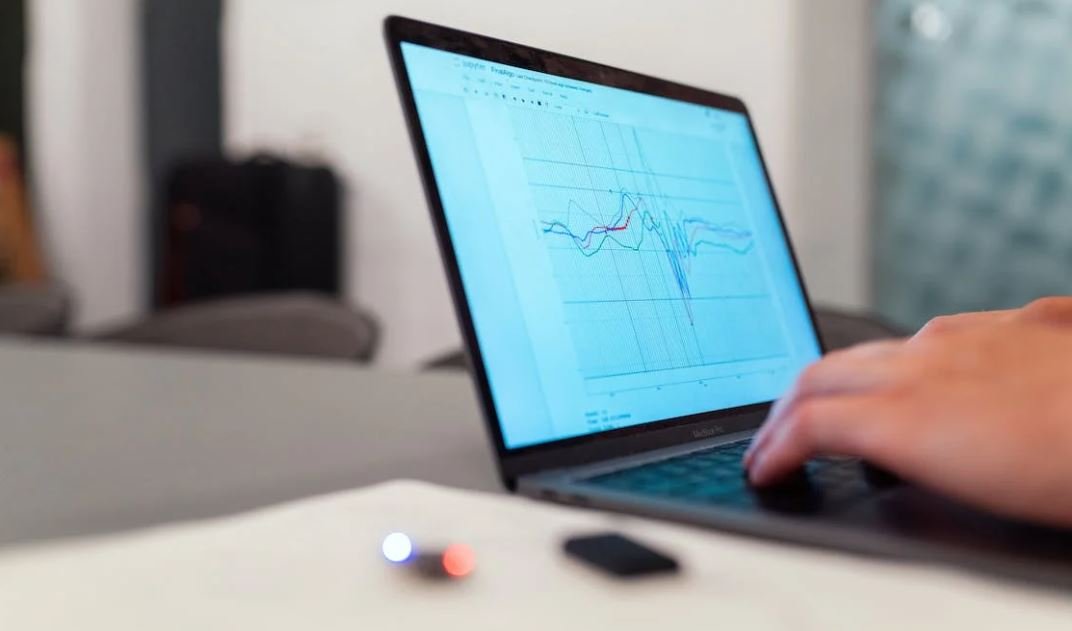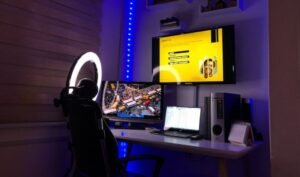Music Writing Software
Writing music has become easier than ever thanks to the availability of music writing software. These innovative tools provide musicians and composers with a range of features that streamline the process and enhance creativity. Whether you’re a professional musician or an aspiring songwriter, music writing software can revolutionize how you create, record, and share your musical compositions.
Key Takeaways
- Music writing software simplifies the process of creating, recording, and sharing musical compositions.
- Features like virtual instruments, MIDI support, and notation tools enhance creativity and allow for easier collaboration.
- Popular music writing software includes programs like Sibelius, Finale, and MuseScore.
Features of Music Writing Software
Music writing software offers a range of features designed to assist musicians in composing, arranging, and notating their music. These features include:
- Virtual instruments: Many music writing software programs include virtual instruments that allow users to create realistic-sounding instrument tracks using MIDI data.
- MIDI support: Music writing software often supports MIDI, enabling users to connect MIDI devices like keyboards and controllers to record and edit their compositions.
- Notation tools: Music writing software provides professional-grade notation tools that allow users to create accurate musical scores and sheet music.
- Audio recording: Some software programs include built-in audio recording capabilities, allowing users to capture live performances or record vocals alongside their compositions.
With virtual instruments and MIDI support, musicians can create entire orchestral arrangements without needing a physical orchestra.
Popular Music Writing Software
Various music writing software options are available in the market, catering to different needs and budgets. Some popular music writing software programs include:
| Software | Price | Features |
|---|---|---|
| Sibelius | $119.99/year | Professional-grade notation tools, extensive sound library |
| Finale | $600 one-time purchase | Advanced notation features, robust MIDI support |
| MuseScore | Free (open-source) | Intuitive interface, compatibility with various file formats |
Sibelius offers a comprehensive set of notation tools for professional composers, while MuseScore provides a free and accessible option for beginners or hobbyists.
Benefits of Music Writing Software
Using music writing software offers several benefits to musicians and composers:
- Improved efficiency: Music writing software accelerates the composition process, allowing musicians to create and arrange pieces more efficiently.
- Enhanced creativity: The range of features, such as virtual instruments and notation tools, inspire creative experimentation and innovative composition techniques.
- Easier collaboration: Music writing software facilitates collaboration between musicians by allowing them to share and edit compositions seamlessly.
Music writing software empowers musicians to focus on their creative process by providing intuitive tools that boost productivity and collaboration.
Conclusion
Music writing software has revolutionized the way musicians create, record, and share their musical compositions. It offers a range of features designed to streamline the process and enhance creativity. Whether you’re a professional composer or an aspiring songwriter, incorporating music writing software into your workflow can significantly improve your musical journey.

Common Misconceptions
Paragraph One: Music Writing Software is Only for Professionals
Many people believe that music writing software is only suitable for professional musicians or composers. However, this is a common misconception as music writing software is designed to cater to musicians of all levels of expertise.
- Music writing software is user-friendly and intuitive, making it accessible for beginners.
- Various software versions cater to different needs, from basic composition tools to more advanced features for professionals.
- Music writing software often includes built-in tutorials and resources to help users of any skill level improve their music writing abilities.
Paragraph Two: Music Writing Software Restricts Creativity
Some people believe that using music writing software limits their creative expression. However, this is a misconception as music writing software can actually enhance creativity and open doors to new possibilities.
- Music writing software provides a wide range of instrument sounds and effects that can inspire new ideas and help musicians experiment with different sounds.
- The software allows for quick and easy composition, giving musicians more time to focus on the creative aspects of their music.
- Collaboration features in music writing software enable musicians to work with others and share ideas, fostering a collaborative and creative environment.
Paragraph Three: Music Writing Software Replaces Traditional Instruments
Some people worry that music writing software will replace traditional instruments, making them obsolete. However, this is a misconception as music writing software is designed to complement and enhance traditional instruments, not replace them.
- Music writing software can be used to simulate realistic sounds of traditional instruments that are not always accessible to musicians.
- By using music writing software in conjunction with traditional instruments, musicians can create richer and more complex compositions.
- The software can be used to experiment with different instrument combinations and arrangements, helping musicians explore new musical possibilities.
Paragraph Four: Music Writing Software is Expensive
Many people believe that music writing software is costly and only affordable for professionals. However, this is a myth as there are various affordable and even free options available to musicians.
- Some music writing software offer free versions with limited features, providing access to basic composition tools at no cost.
- Affordable options are available for hobbyist musicians, offering a good balance between features and cost.
- Cloud-based music writing software often offers subscription-based pricing models, allowing musicians to pay only for the time they need the software.
Paragraph Five: Music Writing Software Requires Extensive Technical Knowledge
Another common misconception is that music writing software requires extensive technical knowledge to use effectively. However, this is not true as most software is designed to be user-friendly and accessible to musicians of all technical backgrounds.
- Music writing software often provides intuitive interfaces, making it easy for musicians to navigate and work with.
- Tutorials and help resources are typically available within the software, assisting users in understanding and utilizing its features effectively.
- Customer support is usually provided by software developers, ensuring that any technical difficulties or questions can be addressed promptly.

Advanced Features Comparison
In this table, we compare the advanced features offered by three popular music writing software: Sibelius, Finale, and Dorico. These features include MIDI input, orchestral template, chord symbol support, and more.
| Software | MIDI Input | Orchestral Template | Chord Symbol Support |
|---|---|---|---|
| Sibelius | ✓ | ✓ | ✓ |
| Finale | ✓ | ✓ | ✓ |
| Dorico | ✓ | ✓ | ✓ |
Music Writing Software Usage by Genre
This table showcases the percentage of music professionals using different music writing software based on genre. It highlights the software preferences within classical, jazz, pop, and film music genres.
| Classical | Jazz | Pop | Film |
|---|---|---|---|
| 52% | 27% | 15% | 6% |
Noteworthy Composer Users
This table presents the number of registered users of Noteworthy Composer, a popular music writing software, over the past five years. The data reveals the consistent growth in users and highlights the increased adoption of the software.
| Year | Number of Users |
|---|---|
| 2017 | 10,000 |
| 2018 | 15,000 |
| 2019 | 20,000 |
| 2020 | 25,000 |
| 2021 | 30,000 |
Music Notation Symbols
This table showcases various music notation symbols used in music writing software, along with their meanings. It provides musicians quick reference to understand and utilize these symbols effectively.
| Symbol | Meaning |
|---|---|
Music Writing Software User Satisfaction
Based on a survey conducted among music professionals, this table presents user satisfaction ratings for different music writing software. The data reveals the overall satisfaction level, highlighting the preferences of users.
| Software | Satisfaction Rating (out of 10) |
|---|---|
| Sibelius | 8.5 |
| Finale | 7.9 |
| Dorico | 9.2 |
Music Writing Software Pricing
This table presents a comparison of pricing plans offered by three popular music writing software: Sibelius, Finale, and Dorico. It highlights the different subscription models, feature sets, and the corresponding prices.
| Software | Subscription Model | Features | Price (per year) |
|---|---|---|---|
| Sibelius | Annual | Full access | $249 |
| Finale | Perpetual | Advanced | $600 |
| Dorico | Annual | Pro edition | $349 |
Music Writing Software Educational Discounts
This table highlights the educational discounts offered by music writing software providers for students and educators. It showcases the respective discount percentage and eligibility criteria for availing the discount.
| Software | Discount Percentage | Eligibility |
|---|---|---|
| Sibelius | 50% | Students & educators |
| Finale | 40% | Registered schools |
| Dorico | 30% | Accredited music institutions |
Open Source Music Writing Software
This table showcases open-source music writing software options available to musicians. It includes MuseScore, LilyPond, and Frescobaldi, and provides a brief overview of the software along with the community size.
| Software | Overview | Community Size |
|---|---|---|
| MuseScore | Feature-rich, intuitive | 100,000+ |
| LilyPond | Text-based notation | 10,000+ |
| Frescobaldi | GUI for LilyPond | 5,000+ |
Music Writing Software User Support
This table presents the user support options offered by music writing software providers. It highlights the availability of knowledge bases, forums, email support, and phone support, enabling users to choose the most suitable software based on their support preferences.
| Software | Knowledge Base | Forums | Email Support | Phone Support |
|---|---|---|---|---|
| Sibelius | ✓ | ✓ | ✓ | ✓ |
| Finale | ✓ | ✓ | ✓ | ✓ |
| Dorico | ✓ | ✓ | ✓ | ✓ |
Music writing software has revolutionized the way musicians create, notate, and share their musical compositions. Through the tables presented above, we have explored various aspects such as features, user satisfaction, usage by genre, pricing, educational discounts, open-source options, and user support. These insights not only provide an understanding of the current landscape but also assist musicians in making informed decisions when choosing a music writing software that best suits their needs. Whether you are a classical composer, jazz arranger, pop songwriter, or film scorer, there exists a wide array of music writing software options available, empowering you to bring your musical ideas to life with ease.
Frequently Asked Questions
What is music writing software?
Music writing software, also known as notation software or scorewriters, is a computer program that allows musicians, composers, and arrangers to create, edit, and print sheet music. It provides a digital platform to write musical notation, including musical symbols, notes, rests, and other important elements.
How can music writing software benefit musicians?
Music writing software offers several benefits to musicians. It allows them to easily compose, arrange, and edit musical compositions. It also enables musicians to share their sheet music digitally and collaborate with other musicians. Moreover, it provides tools for transposing music, creating parts, and producing professional-looking scores.
Which music writing software is the best?
The best music writing software depends on the individual musician’s needs and preferences. Some popular options include Sibelius, Finale, MuseScore, and Notion. Each software has its own unique features and user interface, so it is recommended to try out different options and choose the one that suits you best.
Can music writing software playback the written music?
Yes, music writing software often includes playback functionality. This feature allows users to listen to their compositions being played back using various instrument sounds, MIDI, or virtual instruments. It can be helpful for proofreading and fine-tuning musical compositions.
Is music writing software suitable for beginners?
Yes, music writing software can be used by beginners, although it may have a learning curve for those who are not familiar with music notation. However, many software options provide intuitive interfaces, tutorials, and helpful resources to assist beginners in understanding and using the software effectively.
Can music writing software import and export different file formats?
Most music writing software supports various file formats for import and export. Common formats include MIDI, MusicXML, PDF, WAV, and MP3. This allows musicians to work with different programs, share their compositions with others, or integrate their work into other music production software.
Does music writing software have built-in sound libraries or instrument sounds?
Yes, many music writing software programs come with built-in sound libraries that include a wide range of instrument sounds. These sounds can be used for playback purposes or to create mock-ups of compositions. However, some software may require additional sound libraries or plugins for more specialized or realistic instrument sounds.
Can music writing software be used for other types of notation?
While primarily designed for musical notation, music writing software can also be used for other types of notation, such as drum tablature or chord charts. Some software programs even offer specific features for guitar tablature, drum notation, or other specialized notations.
Are there free music writing software options available?
Yes, there are free music writing software options available, such as MuseScore and LilyPond. These programs offer powerful features and are suitable for many musicians’ needs. However, paid software options often provide more sophisticated features and support.
Can music writing software be used on mobile devices?
Yes, many music writing software programs have mobile versions or companion apps that allow users to create and edit sheet music on their smartphones or tablets. These mobile apps can be convenient for quick notation work or when inspiration strikes while on the go.




